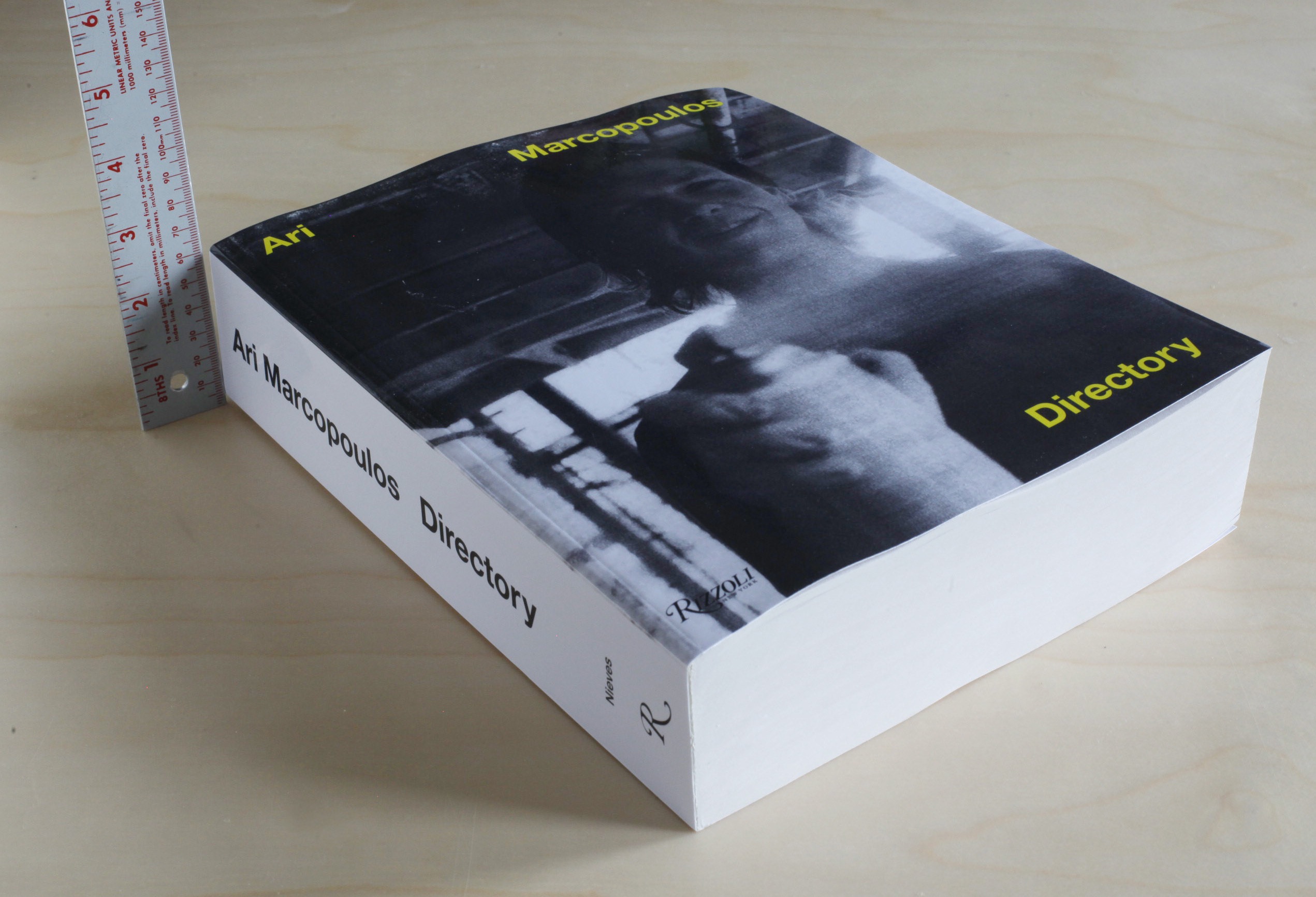Ari Marcopoulos Defines His Own World

COURTESY RIZZOLI
Ari Marcopoulos has been known to zip into oncoming traffic on his bike in pursuit of the perfect photograph—although he doesn’t really believe in the “perfect photograph”: he’s compiling moments through his images, ideally of heightened spontaneity and intensity. Marcopoulos has been photographing for about 30 years now, since beginning his career working with Andy Warhol, and he has lived through more than his share of intensified experiences as the go-to photographer for the Beastie Boys and downtown street skateboarders and, subsequently, emergent youth sports and music subcultures nationwide.
Published by Rizzoli (in collaboration with Swiss imprint Nieves), Marcopoulos’s Directory is less a monograph than a compendium: a 1200-page, phone-book-thick assemblage of gritty, black-and-white images. Scattered throughout the hundreds of images of guns and graffiti are familiar faces like Harmony Korine and Thurston Moore (plus Marcopoulos’s own family), accompanied by endearingly poetic text by critic Neville Wakefield. Despite the overwhelming volume of material, we still had a few questions.
KEN MILLER: How do you edit a 1200-page book?
ARI MARCOPOULOS: You don’t edit. We just took a stack [of photos] and then laid them on top of each other.
MILLER: Your early work was black and white, then you switched to color. Why switch back to black and white?
MARCOPOULOS: I didn’t really switch back. I shoot both color and black and white still—predominantly color. The [images in the book] are all copies, so most of the originals are color photos.
MILLER: How did you arrive at the photocopied printing style you’ve been using for the last few years?
MARCOPOULOS: I have been making photocopies for years, first just as a tool to figure out book layouts, but always loving the look. Then it was a question of being tired of endless tinkering to get a “perfect” color print. With photocopies, it’s all pretty straightforward.
MILLER: Why was it important to keep the date stamps in the digital photos—especially since they’re not chronological or a daily diary?
MARCOPOULOS: Dates can be important. It’s a nice way to remember when I took [the photo] without having to rack my brain or look in the archives. It also makes every photo important, because there is the date. I can take a picture of nothing, but at least we know when I took it.
MILLER: Has making videos affected how you take photos?
MARCOPOULOS: I have always made films simultaneously, so they go hand in hand. I think that my books are like films…
MILLER: What still keeps you excited about youth culture? What changes and what stays the same?
MARCOPOULOS: I am excited about more than just youth culture, and youth is also stretching a bit longer now. But I have to say resistance and disregard keeps me excited.
MILLER: What is something that you’ve learned from your kids?
MARCOPOULOS: To just chill the fuck out.
MILLER: You recently moved back to New York from Northern California. Do you have a favorite place to photograph?
MARCOPOULOS: The place where I am is always my favorite place.
MILLER: Do you think originally being from Holland has influenced how you see U.S. culture? Do you think you have an “outsider” point of view?”
MARCOPOULOS: It probably has, but I won’t lay claim to the “outsider POV.” That’s an old school idea.
MILLER: What is your first memory of moving to NY in the ’80s?
MARCOPOULOS: Getting beat up by the newspaper stand man for browsing magazines.
MILLER: Skating, snowboarding or surfing?
MARCOPOULOS: Sledding.
DIRECTORY WILL BE PUBLISHED APRIL 5. FOR MORE INFORMATION, VISIT RIZZOLI’S WEBSITE.






